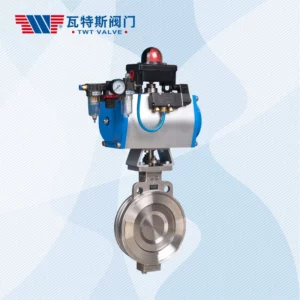When it comes to choosing a butterfly valve manufacturer, it is important to do your research and find one that will meet your specific needs. There are many different manufacturers out there, so it is important to find one that has a good reputation and offers a high-quality product.
- What are butterfly valves?
Butterfly valves are a type of valve that uses a disc to control the flow of fluid. The disc is positioned in the center of the valve body and is attached to a rod that is operated by a handle. When the handle is turned, the disc is rotated and the flow of fluid is either blocked or allowed to pass through the valve. Butterfly valves are often used in pipelines and other fluid systems because they can be opened or closed quickly and easily. - Why choose a butterfly valve?
Butterfly valves are a great choice for many reasons. Their unique design allows them to be opened and closed quickly, making them ideal for controlling the flow of liquids and gases. They are also relatively easy to maintain and can be used in a variety of applications. - What to look for when choosing a butterfly valve.
Butterfly valves are popular choices for many industrial applications. They are available in a variety of sizes and materials to meet the needs of most fluid-control systems. When choosing a butterfly valve, there are a few factors to consider.
The first consideration is the type of fluid that will be passing through the valve. Some butterfly valves are designed for specific types of fluids, while others are more general-purpose. Make sure the valve you choose is compatible with the fluid you will be using.
The second consideration is the pressure and temperature rating of the valve. The valve must be able to handle the pressure and temperature of the fluid it will be controlling.
The third consideration is the type of mounting the valve will require. Some valves require mounting flanges, while others can be mounted directly to the pipeline.
The fourth consideration is the required opening size. Make sure the valve you choose has an opening size that is compatible with the size of the pipe it will be installed on.
The fifth consideration is the type of actuator that will be used to open and close the valve. There are a variety of actuators available, each with its own advantages and disadvantages.
Once you have considered these factors, you should be able to choose the butterfly valve that is best suited for your application. - How to install a butterfly valve.
Installing a butterfly valve is a relatively easy process that can be completed in a few simple steps. The first step is to identify the location where the valve will be installed. Once the location is determined, the pipe must be marked and cut to length. The butterfly valve can then be installed using the included screws and bolts. high performance butterfly valves manufacturers The valve should be tightened until it is flush with the pipe. Once the valve is installed, it can be tested by closing off the flow of water and checking to see if the valve is functioning properly. - Maintenance of butterfly valves.
Butterfly valves must be inspected and maintained on a regular schedule to ensure that they continue to operate properly. The maintenance procedure will vary depending on the type of butterfly valve, but generally involves cleaning and lubricating the moving parts. If the butterfly valve is used in a corrosive environment, then it may also need to be protected with a coating of paint or other sealant.
When choosing a butterfly valve manufacturer, it is important to do your research and find a company that meets your specific needs. There are many different manufacturers out there, so it is important to find one that has a good reputation and offers a high-quality product. By doing your research and choosing a reputable manufacturer, you can be sure to get a product that will meet your needs and last for many years.
